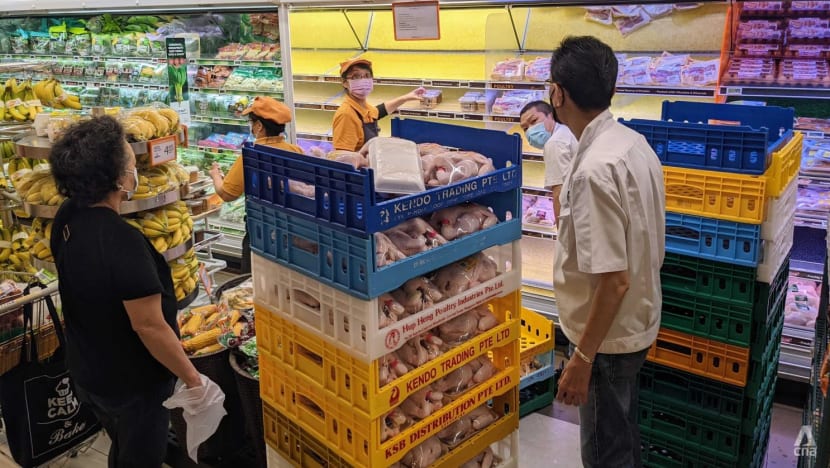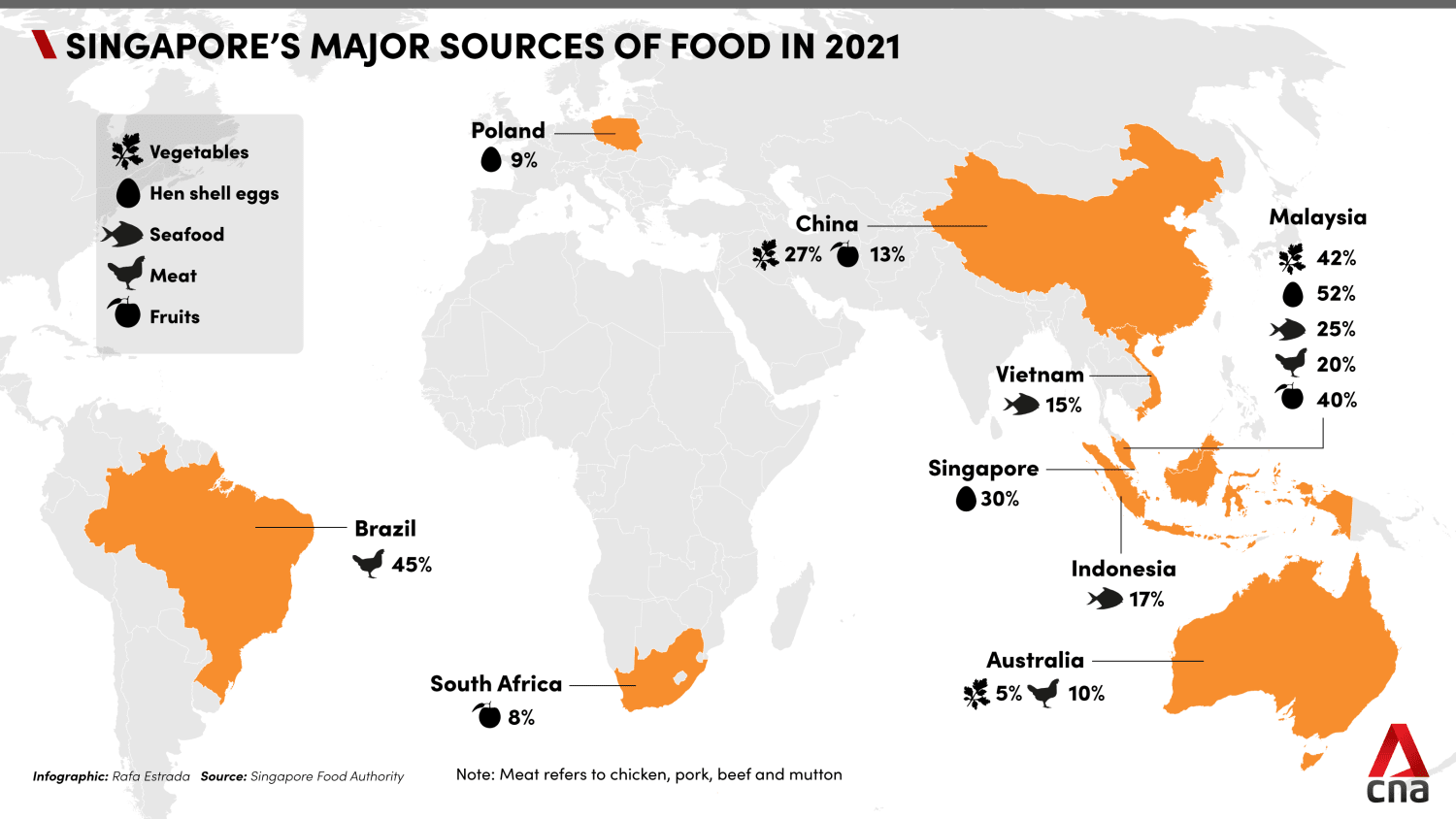CNA Explains: Where does Singapore get its food from?

The poultry section at the FairPrice Finest outlet in Bedok Mall. (Photo: CNA reader)
SINGAPORE: With Malaysia set to impose curbs on chicken exports from Jun 1, Singapore’s food supply has come into sharp focus.
More than 90 per cent of Singapore’s food is imported, and about 10 per cent is locally produced. Authorities work to diversify Singapore import sources to ensure a stable supply of safe food, said the Singapore Food Agency (SFA).
According to the latest Singapore Food Statistics report from the SFA, the number of imported food supply sources by countries and regions has increased from 2019 to 2021.

Up to 40 countries are allowed to export high-risk food items to Singapore, after meeting SFA’s requirements on food safety and public health.
One of Singapore's largest sources of food is its neighbour Malaysia, which supplies more than half its eggs, about 40 per cent of its fruits and vegetables, as well as a sizeable amount of meat and seafood.
That said, Singapore buys more meat from Brazil than any other country.

Singapore imported 214,400 tonnes of chicken in 2021. About 48 per cent of these chickens were from Brazil, followed by 34 per cent from Malaysia and 8 per cent from the United States. The remaining 10 per cent were from other countries and regions.
Over the last three years, Singapore has also further diversified its sources of eggs. In 2019, 72 per cent of Singapore’s egg imports were from Malaysia, but that was reduced to 52 per cent in 2021.
The percentage of the eggs produced locally has inched up from 26 per cent in 2019 to 30 per cent in 2021.
Here is how Singapore's commonly consumed foods are sourced:

Authorities have plans to build the agri-food industry’s capabilities and capacity to sustainably produce 30 per cent of Singapore’s nutritional needs locally by 2030.
















